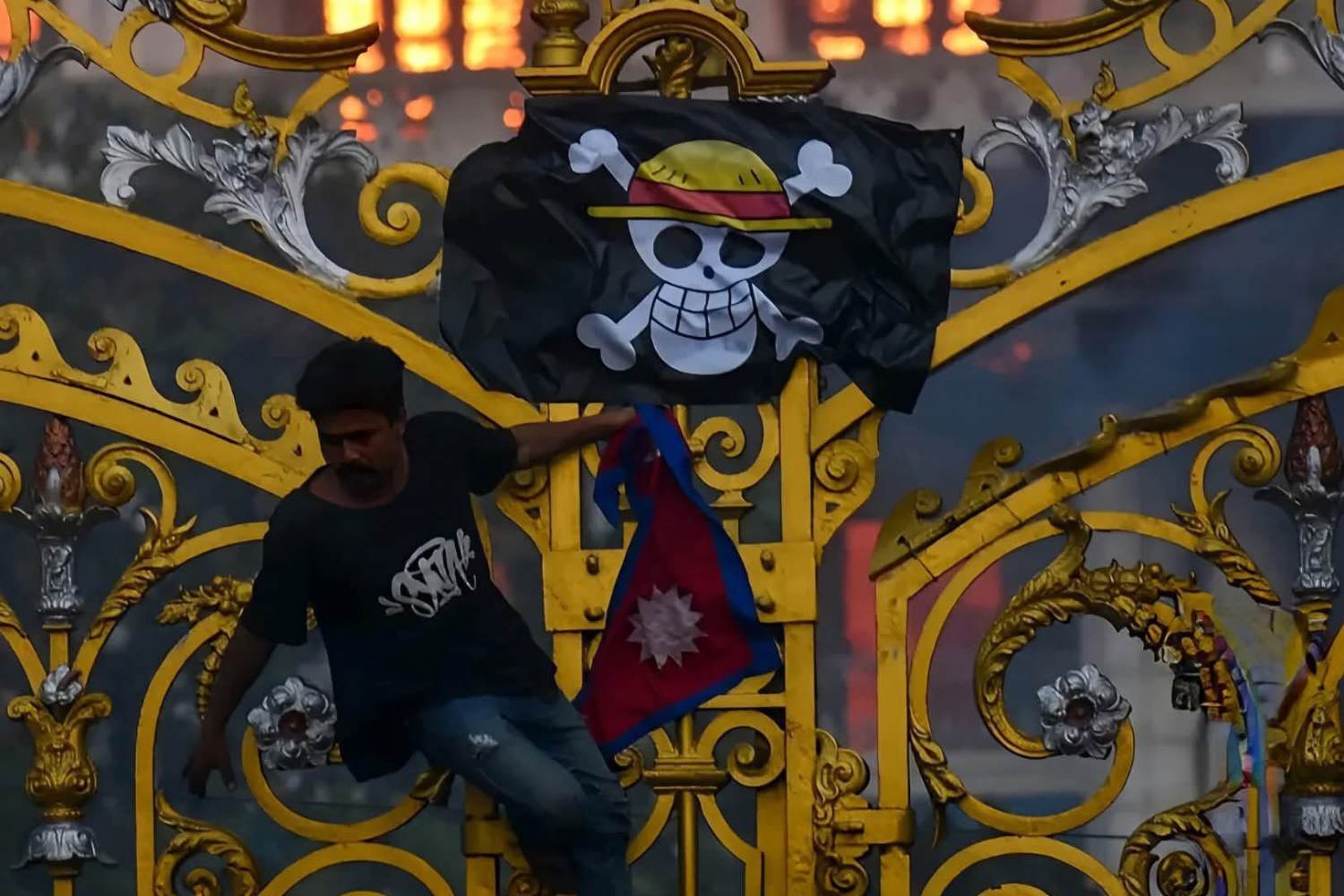The One Piece straw hat skull has become a global protest emblem, spreading from Indonesia to Europe. Known in the U.S. but not used in demonstrations.

@vidsthatgohard/X
A simple drawing—a skull wearing a straw hat from the manga One Piece— has gone far beyond its origins as an anime fan emblem. First sighted in Indonesia, the flag has since been waved in Nepal, the Philippines, and even France, morphing into a global symbol of resistance against corruption, censorship, and authoritarianism.
From the streets of Jakarta to the world
The banner made its first public appearance in July, during protests led by truck drivers and students in Indonesia. Its reach exploded after the death of Affan Kurniawan, a 21-year-old motorcyclist killed during clashes with police in Jakarta. From that moment on, the straw hat flag stopped being a piece of pop culture and became shorthand for social injustice and the demand for freedom.
Meaning in Nepal and the Philippines
By September 8, the flag appeared in Nepal during anti-corruption rallies that escalated into violent clashes and ultimately the resignation of Prime Minister K.P. Sharma Oli. Young demonstrators waved the symbol alongside chants such as “The Time is Now” and “#WakeUpNepal.”
In the Philippines, it surfaced at a student-led race against corruption at Quezon City University, an event that drew over 1,000 participants. The flag was no longer a niche anime reference, but rather a shorthand for collective outrage and generational defiance.
Its arrival in Europe
Even in France, amid protests against President Emmanuel Macron and his austerity policies, some demonstrators carried hand-drawn versions of the straw hat skull or wore straw hats themselves. The image became instantly recognizable, playful yet deeply political.
What it means for young people
The world of One Piece has turned into a universal language of political resistance. The reason seems almost obvious: the manga’s protagonists rebel against oppressive systems, fighting for freedom in a corrupt world. That, say many in Gen Z, is exactly what they feel called to do now.
As Natalie Pang, a lecturer at the University of Singapore, explained, the flag’s strength lies in its ability to “distill complex ideas into an image that is both immediate and shareable.” No longer a skull meant to inspire fear, it is seen as a sign of friendship, dreams, and liberty—a unifying thread for young people across borders, amplified by social media.
So far, there are no significant reports of the straw hat skull being waved during U.S. protests. The symbol is certainly known among American anime fans, given One Piece’s global popularity, but it hasn’t taken root in political demonstrations there the way it has in Asia or Europe. At most, it exists in U.S. pop culture circles as a recognizable icon, not yet as a banner of resistance.
Different nations, same flag. 🏴☠️ Freedom everywhere — from Indonesia & Nepal to Gaza, Italy & France. Who’ll raise it next?#ONEPIECE pic.twitter.com/RriLOtfwx9
— 𝘕𝘰𝘢 (@Noa_Op0) September 11, 2025
